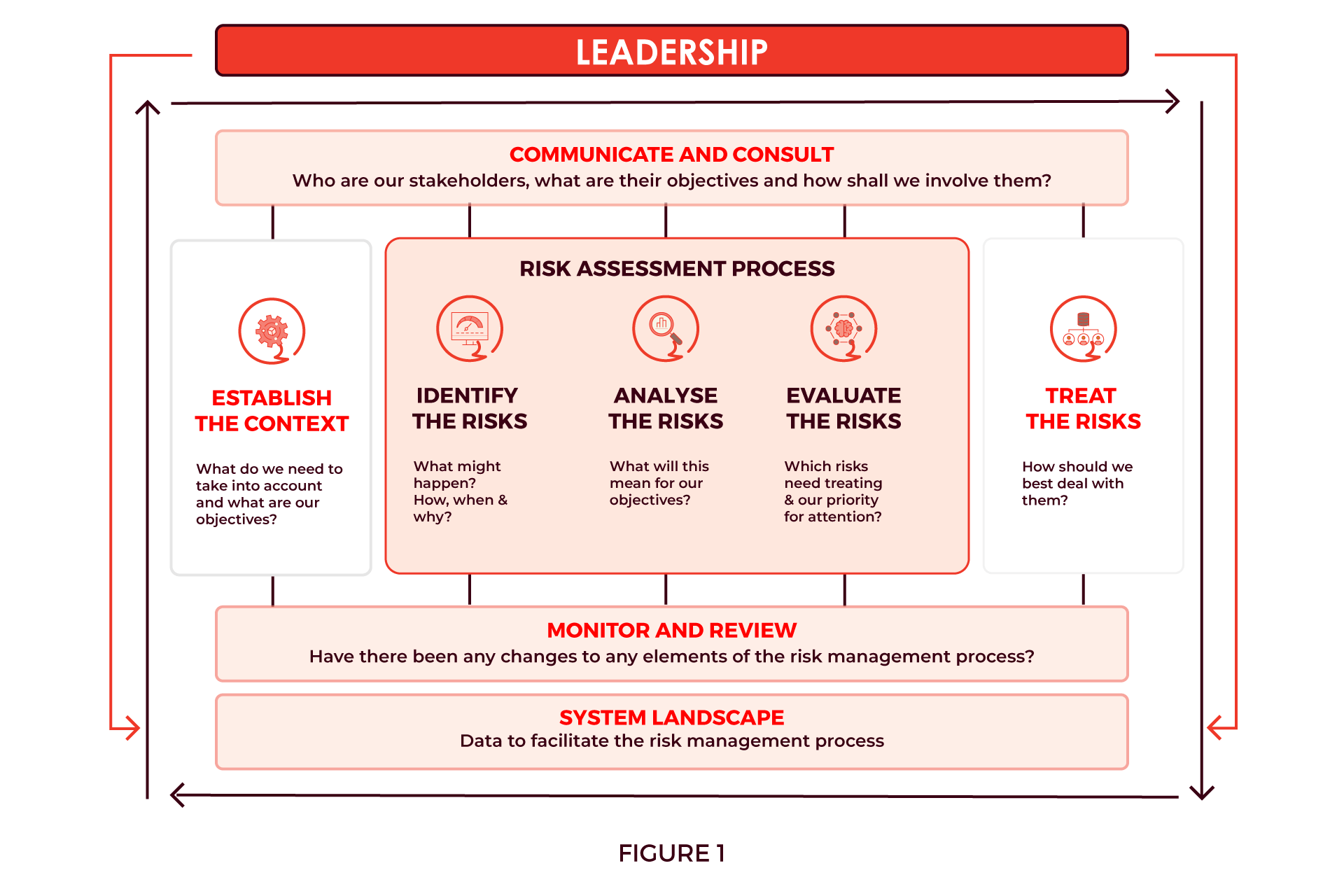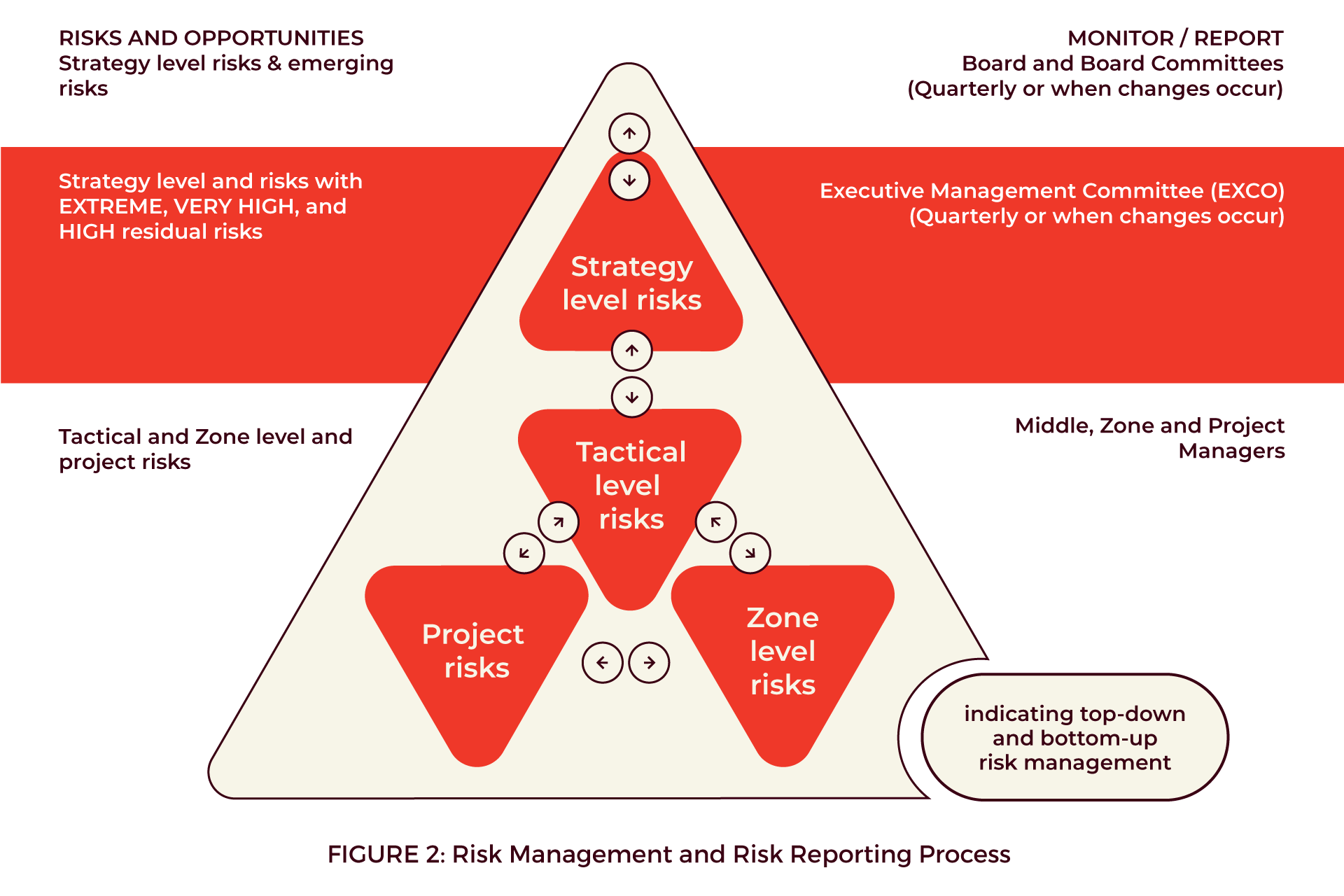OUR BUSINESS
Risk and Opportunity Management
At SANBS, risk and opportunity management are integral to our strategic framework and critical to our mission of being 'Trusted to Save Lives'. By proactively identifying and managing risks while capitalising on opportunities, we reinforce our dedication to continuous improvement. This proactive approach ensures our resilience and adaptability, enabling us to stay relevant and effective in a dynamic and constantly changing environment.
Managing risks and seizing opportunities are paramount to safeguarding what matters most. Our Enterprise Risk Management (ERM) Framework provides a robust foundation, guiding us in embedding structured risk management processes that deliver sustained value.
The ERM Framework ensures that risks and opportunities, critical to achieving our iHEALTh strategy, are identified and managed within defined risk appetite and tolerance levels set by the Board. Decisions to tolerate, treat, terminate, or share risks and opportunities are made based on these parameters.
As a vital healthcare service provider, SANBS prioritises protecting donors, patients, and stakeholders from potential adverse effects. This commitment is reflected in our conservative risk management approach.
SANBS employs an iterative and dynamic risk management process to continually identify and evaluate risks and opportunities in response to a rapidly changing internal and external environment. Stakeholder engagement plays a crucial role in identifying emerging risks and opportunities.
Oversight of our risk management practices lies with the Risk, Technology, and Information Governance Committee. This committee ensures that our risk management strategies align with our organisational goals and effectively mitigate potential threats.
During the year, one of our service providers experienced a cyber-attack, resulting in the minimal exposure of SANBS data. The affected data subjects were notified, and the incident was reported to the Information Regulator.
Navigating Risks and Opportunities in BECS Deployment
Effective management of risks and opportunities was integral to the successful implementation of the BECS and its ongoing operations. Key aspects included:

Integration into Project Management
Risk and opportunity management were embedded throughout the project lifecycle. This involved dedicated planning and status meetings with stakeholders, where risk discussions were prominent agenda items.

Mitigation Planning
Prior to the go-live decision, comprehensive mitigation plans were developed based on prioritised risks. These plans aimed to ensure business continuity and minimise potential disruptions during implementation.

Stabilisation Phase
Post-implementation, a risk-based stabilisation plan was enacted to maximise the realisation of project benefits and ensure operational stability.
Role of Risk Management in FY24 Business Planning
SANBS Exco and the senior leadership team commenced their FY24 business planning cycle with a review of the risks that may prevent the iHEALTh strategy from being achieved. The Board oversaw the revised risks at its Board and Exco strategy and risk assessment workshop on 11 August 2023.
Role of Risk Management in Strategy Formulation Beyond 2026
Risk management is pivotal in shaping SANBS' strategy formulation for 2026 and beyond, particularly in addressing strategic risks and opportunities within the blood transfusion landscape. Key elements include:

Strategic Focus
The strategy development process included a rigorous assessment of key strategic risks and opportunities affecting blood transfusion services in South Africa over the medium term.

Analytical Tools
Tools such as the theory of change strategic planning methodology, as well as PESTEL and SWOT analyses, were instrumental in identifying external factors and internal capabilities influencing strategic decisions. These analyses informed the identification of strategic objectives and prioritisation of strategic projects to achieve the objectives over the next five years.

Stress Testing and Prioritisation
Strategy-level risks are being stress-tested against the strategic objectives and re-prioritised as part of the planning process. This i ensures alignment between strategic goals and risk management efforts, enhancing the feasibility and effectiveness of the strategic roadmap.
Benefits Derived from Practicing Good Risk Management
Our ERM framework is premised on global practical risk management practices, including ISO31000 and King IV™, and includes the identification, analysis, evaluation, treatment and monitoring of risks and opportunities from a position where we understand the context of our internal and external business environment and the impact on our iHEALTh strategy.

Figure 1* demonstrates how the Board, Senior and Middle Management drive the effort to manage and report on risks.

All lines of assurance are included as part of the Board and Board Committee oversight to ensure that roles, responsibilities and accountabilities for risk are clearly defined.


